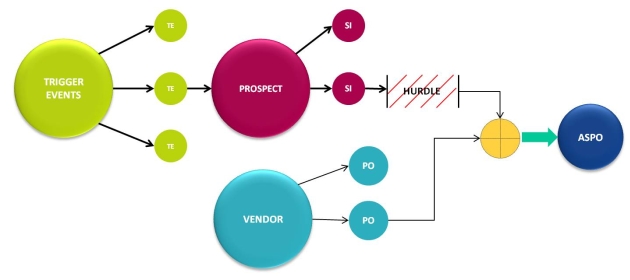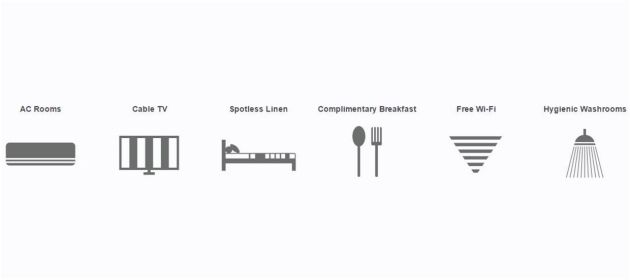 In 4 Major Mistakes B2B Companies Commit To Lose Clients, Ian Dainty declares that B2B technology companies lose “farming” business by failing to communicate with existing customers about their value delivered, new offerings, and so on.
In 4 Major Mistakes B2B Companies Commit To Lose Clients, Ian Dainty declares that B2B technology companies lose “farming” business by failing to communicate with existing customers about their value delivered, new offerings, and so on.
It’s a no-brainer that customers will defect from their incumbent vendors if they’re not kept informed.
However, I’m not so sure if that’s a real problem. To explain why, let me backtrack a bit.
Back in the day, as soon as sales booked an order for a B2B technology product or service, the account would be handed over to delivery. Very soon, sales forgot to give frequent updates to customers about value add and new offerings. In some companies, even delivery folks wouldn’t be aware of these things! As a result, whenever they had a new requirement and didn’t know that their incumbent vendor was geared up to fulfilling it, customers would defect to competitors.
Most IT vendors realized this and responded to the problem by creating the new post of Client Engagement Director. This is a senior employee who is responsible for growing revenues from an existing customer. Often stationed at client premises, it’s the job of a CED to keep the customer updated on what was happening within their company and how they were adding value to the customer’s company. CEDs are often comped on the incremental revenues they generate from their accounts. Over time, with firms placing tremendous focus on “mining existing accounts” – as this is called in industry speak – farming became a major source of new revenues for IT vendors, especially those selling services.
Ergo, I contend that IT vendors no longer lose business because they fail to communicate with existing customers about their value delivered, new offerings, and so on.
But B2B technology providers still do lose business from existing customers.
I was trying to figure out why this happens fairly regularly.
I then saw this tweet:
. @HDFC_Bank 's marketing strategy for their new app Payzapp seems to be spamming their customers incessantly via emails & SMS.
— Sukumar Rajagopal (@rsukumar) July 11, 2015
Here’s a customer of a bank ranting about the bank’s over-frequent attempts to inform him about its new mobile payment product.
It struck me that, for every customer who complains about not receiving enough updates from their incumbent supplier, there’s another who protests about about receiving too many updates! And I realized that communication per se can’t be the reason for vendors to lose business from their existing customers.
Then what is?
I think it’s frequency and relevancy of communications.
From personal experience and anecdotal evidence, I’ve noticed two important consumer behavior traits regarding communications:
- If you provide updates too frequently, you risk annoying customers. If you provide updates too rarely, you risk customers forgetting about you.
- Customers welcome relevant updates and spurn irrelevant updates, no matter the frequency.
Therefore, getting the frequency and relevance of communications right is key to winning more business from existing customers.
How does a vendor get them right?
The simplistic answer to this question is to go ask the customer. However, that approach will not jell in today’s world of Buyer 2.0.
For the uninitiated, our post What Happens Before A Prospect Contacts Sales? provides a good overview of the new Buyer 20 purchasing paradigm.
 Our approach to sell technology in the world of Buyer 2.0 is explained in Ensuring That Buyer 2.0 Contacts *Your* Sales. It resonates very well with CEB’s “Challenger Marketing” strategy where we gain insight about our customer’s industry, find pain areas, industry hot topics and use Marketable Items to draw attention to what prospects are doing wrong or not doing right. In other words, we divine the major drivers impacting our customer organizations and aggressively advise them on how to respond to them.
Our approach to sell technology in the world of Buyer 2.0 is explained in Ensuring That Buyer 2.0 Contacts *Your* Sales. It resonates very well with CEB’s “Challenger Marketing” strategy where we gain insight about our customer’s industry, find pain areas, industry hot topics and use Marketable Items to draw attention to what prospects are doing wrong or not doing right. In other words, we divine the major drivers impacting our customer organizations and aggressively advise them on how to respond to them.
After taking such a bold approach, it would be silly for us to ask our customers mundane-sounding questions like “Do you want weekly updates or monthly updates?” and “What content would you like to see in our updates?”
So, we don’t ask them.
Instead we take the lead to get frequency and relevance right on our own by taking the following steps:
- Frequency. We start by providing updates once a week. If customers complain that they’re hearing too often from us, we increase the interval to four weeks. If customers call us strangers, we reduce the interval to two weeks. We rinse and repeat this procedure until we reach an equillibrium. This helps us get the update frequency right.
 Relevance. We recommend crafting ASPOs, which are account specific point offerings that are based on triggers specific to an account. By definition, ASPOs are highly relevant. More on this approach can be found at Use ASPOs To Improve Cold Call Response Rates. We believe this approach is more effective at improving relevance compared to the traditional one where you send out updates of your new products or services, expect the customer to map it to their needs, and wait for them to get back to you if and when they discover something resonating with their situation. While ASPOs don’t come cheap, they do a great job at surfacing new opportunities and pay for themselves many times over from the very first new deal that they help win from an existing customer.
Relevance. We recommend crafting ASPOs, which are account specific point offerings that are based on triggers specific to an account. By definition, ASPOs are highly relevant. More on this approach can be found at Use ASPOs To Improve Cold Call Response Rates. We believe this approach is more effective at improving relevance compared to the traditional one where you send out updates of your new products or services, expect the customer to map it to their needs, and wait for them to get back to you if and when they discover something resonating with their situation. While ASPOs don’t come cheap, they do a great job at surfacing new opportunities and pay for themselves many times over from the very first new deal that they help win from an existing customer.
To summarize, the secret to better communications is to iterate until you get your update frequency right and use ASPOs to make your updates relevant.
Depending upon the breadth of your offerings and the heterogeneity of your target market, you might need to set frequency and relevance at the level of customer segments or even individual accounts. If that sounds too onerous, we’re there to take the weight off your shoulders!

